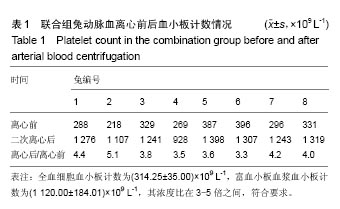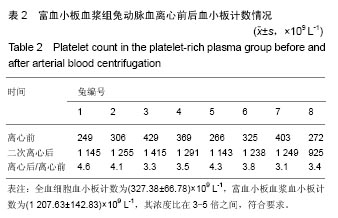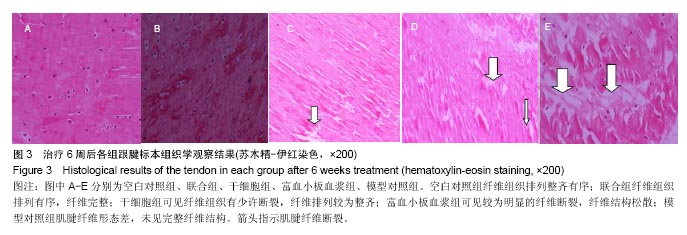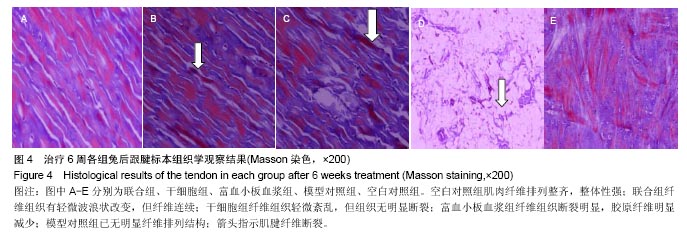中国组织工程研究 ›› 2018, Vol. 22 ›› Issue (6): 921-926.doi: 10.3969/j.issn.2095-4344.0069
• 生物材料基础实验 basic experiments of biomaterials • 上一篇 下一篇
富血小板血浆与肌腱干细胞共混物干预跟腱病模型兔肌腱组织形态及金属蛋白酶1的表达
咸 杰,何本祥,吴 骁,檀亚军
- 成都体育学院,四川省成都市 610041
Autologous platelet-rich plasma in combination with tendon stem cells to treat tendinopathy in a rabbit model: histomorphological changes of the tendon tissue and matrix metalloproteinase 1 expression
Xian Jie, He Ben-xiang, Wu Xiao, Tan Ya-jun
- Chengdu Sport Institute, Chengdu 610041, Sichuan Province, China
摘要:
文章快速阅读:
.jpg)
文题释义:
富血小板血浆:是自体血小板的浓缩后的产物,通过采集外周血后二次离心后制备,其中的α-颗粒可释放许多生长因子和细胞因子,其生长因子含量高于正常血浆的3-5 倍,主要的生长因子包括有转化生长因子β、胰岛素样生长因子1、血管内皮生长因子等,这些因子能够在组织修复工程中发挥关键作用。
前列腺素E2制作跟腱病模型的机制:可能是前列腺素E2能够使肌腱组织中Ⅰ、Ⅲ型胶原细胞外基质发生改变,使Ⅰ型胶原纤维含量下降的同时,Ⅲ型胶原表达上升,降低其生物力学特性,其表现与因退变所致的改变一致;同时前列腺素E2能够刺激炎性递质的产生,增加血管通透性,促进炎性细胞的趋化与浸润,这一过程与肌腱病初期炎性改变吻合。
背景:富血小板血浆针对组织重建修复的研究及应用一直是医学及生物工程学的研究热点。
目的:观察富血小板血浆与肌腱干细胞共混物对肌腱病兔肌腱组织形态及金属蛋白酶1表达的影响。
方法:将40只新西兰大白兔随机分为2组,模型组(n=32)在距左跟骨附着点约2 cm处注射前列腺素E2,1次/周,共4周,建立肌腱病动物模型;空白对照组(n=8)相同部位注射等量的生理盐水。4周后,将模型组随机分为4组,联合组于跟腱局部注射自体富血小板血浆与自体肌腱干细胞混合物,干细胞组注射自体肌腱干细胞,富血小板血浆组注射自体富血小板血浆,模型对照组注射等量的生理盐水,每3周1次,注射2次。注射6周后取跟腱组织标本,进行组织学检查及金属蛋白酶1检测。
结果与结论:①苏木精-伊红染色:联合组纤维组织排列有序,纤维完整;干细胞组纤维组织有少许断裂,纤维排列较为整齐;富血小板血浆组纤维断裂明显,纤维结构松散;模型对照组肌腱纤维形态差,未见完整纤维结构,炎性细胞浸润明显;②Masson染色:联合组纤维组织有轻微波浪状改变,但纤维连续;干细胞组纤维组织轻微紊乱,组织无明显断裂,炎性细胞浸润明显;富血小板血浆组纤维组织断裂明显,胶原纤维明显减少,炎性细胞浸润明显;模型对照组已无明显纤维排列结构,炎性细胞浸润明显;③金属蛋白酶1水平:干细胞组、富血小板血浆组、模型对照组金属蛋白酶1水平高于空白对照组(P < 0.05),联合组金属蛋白酶1水平与空白对照组接近(P > 0.05);④结果表明:富血小板血浆与肌腱干细胞共混物可通过抑制肌腱细胞基质及胶原降解的恶性循环、下调肌腱细胞中金属蛋白酶1表达,延缓肌腱病炎性反应及退行性改变。
中图分类号:






.jpg)